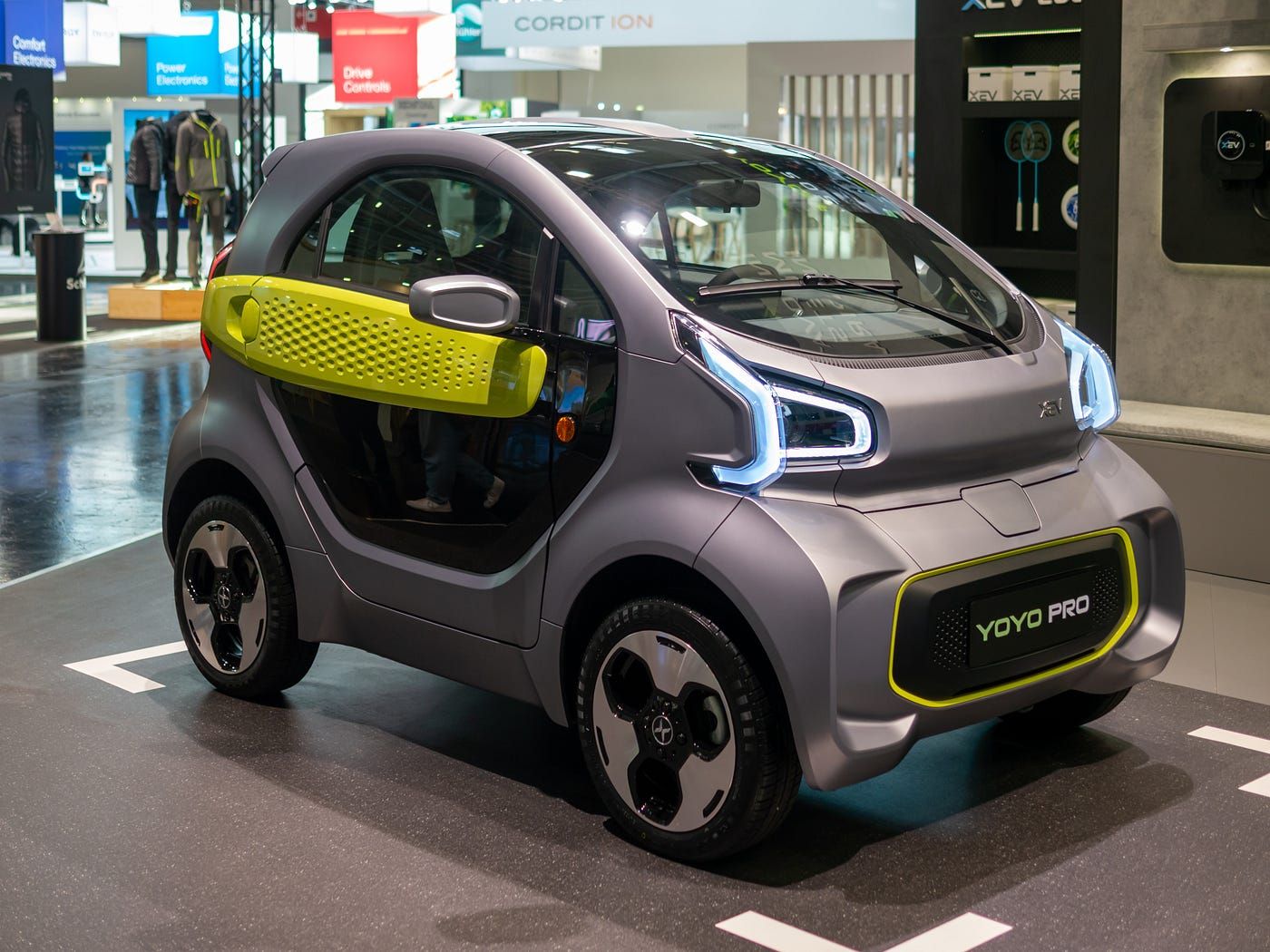
Alright, listen up, gearheads and gasoline loyalists! We’ve all seen ’em: those sleek, silent electric SUVs cruising past the pump, their drivers sporting a smug little grin that just screams ‘I’m saving the planet *and* my wallet.’ You, perched high in your trusty F-150 or Silverado, might scoff, might mutter something about range anxiety or dirty batteries. But let’s be honest, deep down, there’s a part of you – a tiny, begrudging part – that wonders if those EV drivers actually know something you don’t. And that, my friends, is exactly what we’re here to unpack.
Because here’s the dirty little secret no one talks about: while you’re busy calculating MPG and debating the merits of a good old V8, the world of electric vehicles is quietly, confidently, changing. And some of those changes? They’re downright compelling, even to the most hardened diesel devotee. We’re not here to preach or convert, but to pull back the curtain on what’s really going on under the hood (or, you know, where the hood would be) of these electric machines. What makes those EV owners so damn happy, anyway? And what are the real, tangible benefits that might just make a gas truck owner pause and think, ‘Huh, maybe there’s something to this?’
So, buckle up. We’re about to dive into the psyche of the electric vehicle owner, peel back the layers of marketing hype, and expose the truths that might just surprise you. We’re going to explore what these electric SUVs are *really* bringing to the table, and in doing so, reveal what gas truck owners, in their quiet moments, might actually be thinking about the EV revolution. Prepare for some revelations that could either solidify your stance or, dare we say, spark a flicker of curiosity about the electric side of the fence. Let’s roll.
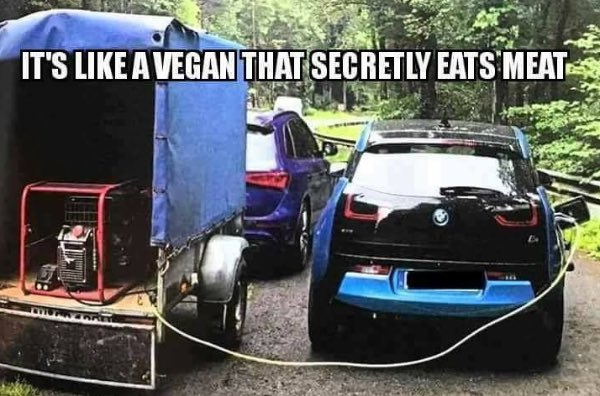
1. The Unsettling EV Owner Satisfaction Rate: Why Are EV Drivers *So* Happy?
Okay, let’s start with a gut punch, shall we? You, a proud gas truck owner, might assume that dealing with charging woes and range anxiety would make EV drivers a perpetually grumpy bunch. But hold onto your spark plugs, because the data tells a radically different story. According to the 2024 Cox Automotive Car Buyer Journey study, a staggering 82% of EV owners reported being happy with their purchase. That’s not just “happy” in a general sense; it’s the *highest rate among any type of vehicle*, and it’s considerably ahead of the overall 75% satisfaction rate for all car buyers.
Think about that for a second. These folks are not just content; they’re genuinely thrilled with their electric rides. This isn’t just a slight uptick; it’s a significant lead over every other vehicle type out there. It suggests that once someone commits to the electric life, they tend to find it genuinely rewarding, perhaps even more so than those of us still tied to the internal combustion engine. It’s enough to make you wonder what secret sauce they’re sipping on that keeps them so darn pleased.
Now, a gas truck owner might internally scoff, dismissing this as early adopter bias or some kind of self-justification. But 82% is a powerful number. It implies that the actual experience of owning and driving an EV, for a significant majority, surpasses expectations. Maybe it’s the instant torque, the quiet ride, or simply the feeling of driving a genuinely modern piece of machinery. Whatever it is, that level of satisfaction is something you just don’t hear about with quite the same fervor in the gas-powered world, and it’s definitely something that sticks in the back of a gas truck owner’s mind.

2. The Digital Dealership Advantage: EV Buyers Embrace Modern Tools for a Smoother Purchase
While you might still prefer kicking tires on the lot and haggling face-to-face with a salesperson (a time-honored tradition, to be fair), EV buyers are out here playing a different game. The same Cox Automotive study revealed a fascinating trend: more than three-quarters of EV buyers used digital tools while researching and buying their new vehicle. Compare that to less than half of gas-powered car buyers who did the same. This isn’t just a minor difference; it’s a chasm in buying habits.
What does this mean? It means EV buyers are leveraging technology to make the purchase process quicker and easier, allowing them to see a car’s price, features, and availability with unprecedented efficiency. They’re doing their homework online, likely avoiding some of the traditional dealership headaches that have plagued car buyers for decades. While you’re dedicating an entire Saturday to the hunt, these folks are probably getting quotes and comparing models from their couch, coffee in hand.
Now, a gas truck owner might secretly appreciate the idea of a streamlined buying process. Who *enjoys* the traditional car buying dance? This digital-first approach aligns with a modern, efficient mindset, something that even the most old-school among us can grudgingly admire. It paints a picture of EV ownership not just as a vehicle choice, but as a lifestyle embraced by those who value convenience and cutting-edge solutions, right from the very first click.

3. **The Silent Environmental Victory: EVs’ Massive Potential for Reducing Pollution and Fuel Costs**
Alright, let’s tackle the elephant in the room that even the most cynical gas truck owner has heard about: the environmental angle. You might dismiss it as tree-hugger talk, but the numbers are pretty compelling, even if you keep them to yourself. According to the Environmental Protection Agency, if every multi-car household in the U.S. swapped out just *one* car for an electric vehicle, annual polluting gases would drop by up to 353 million tons. That’s not a typo. Three hundred and fifty-three million tons.
And here’s another kicker that hits you right in the wallet: U.S. households could save upward of $72 billion each year on fuel costs with that same switch. Seventy-two *billion* dollars. Now, you might scoff at the environmental bit, but $72 billion in annual fuel savings? That’s a number that makes even the most diesel-blooded individual sit up and take notice. Imagine what that could do for household budgets, for local economies, for the overall cost of living.
It’s a powerful one-two punch that an EV brings to the table: significantly cleaner air and a massive collective savings on fuel. While a gas truck owner might pride themselves on raw power and capability, the sheer scale of these potential benefits from widespread EV adoption is something that’s hard to ignore. It’s the kind of quiet, impactful change that, whether acknowledged or not, underscores a powerful advantage of the electric fleet.
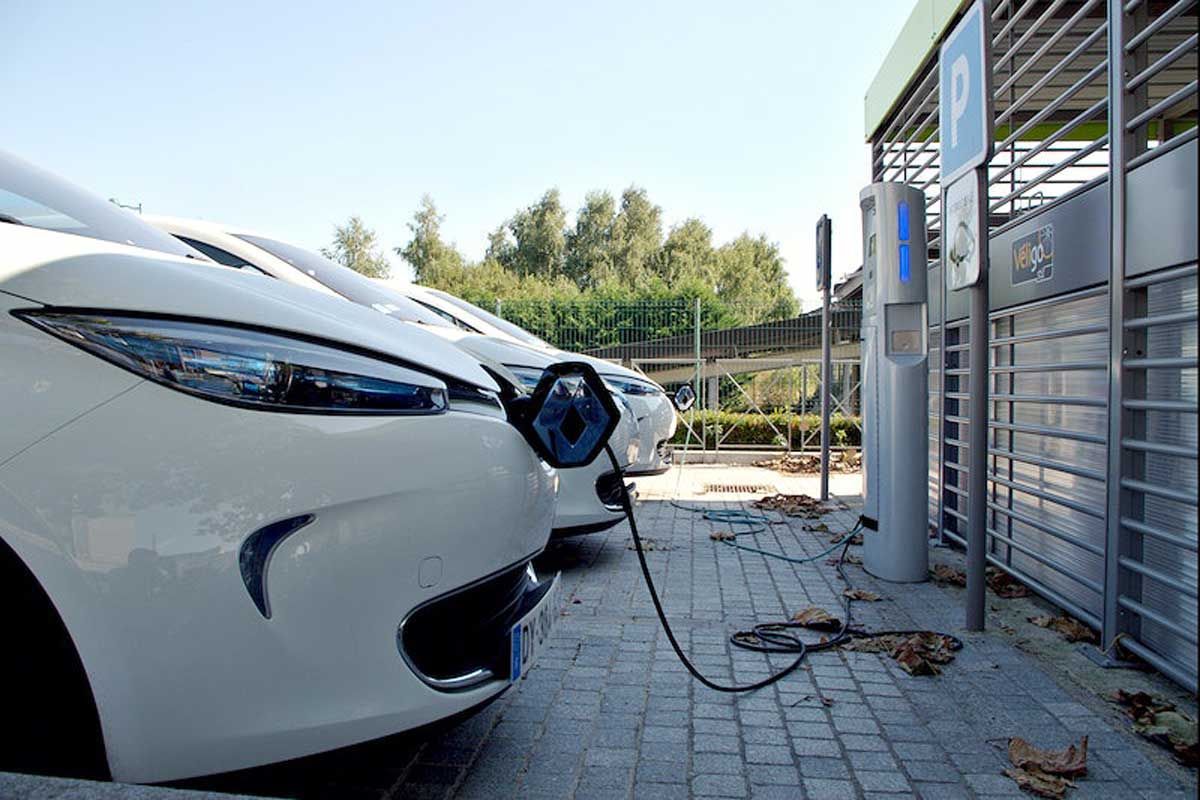
4. **Beyond the Battery: Manufacturing Pollution Myth-Busting – EVs Quickly Offset Their Production Footprint**
Ah, the classic rebuttal: “Yeah, but what about all the pollution from making the batteries?” It’s a valid question, and one you’ve probably heard (or said) countless times. It’s a common talking point among gas truck owners, designed to shut down any pro-EV argument. But here’s where the facts step in and throw a wrench into that line of thinking, thanks to some rigorous analysis.
Reuters found that if a Tesla Model 3 and a Toyota Corolla both leave a dealership, once they have both been driven about 13,500 miles, the Tesla has already made up for all of its manufacturing pollution. Let that sink in. Just 13,500 miles. That’s less than a year of average driving for many. This isn’t some abstract projection; it’s a calculated tipping point where the EV’s cleaner operational emissions effectively neutralize its initial manufacturing footprint.
And here’s the kicker: this calculation assumes a normal grid energy mix. If an EV driver is powering their vehicle with solar or a high percentage of renewable energy, that “payback” period is even shorter, creating an even bigger advantage. This fact directly addresses one of the most persistent criticisms of EVs, turning a perceived weakness into a verifiable strength. A gas truck owner might secretly be impressed by such a swift environmental offset, especially if they’ve been using the manufacturing argument as their ace in the hole.

5. The Long Game: Unseen Financial Savings – EVs Deliver Significant Lifetime Cost Advantages
Okay, let’s talk real money, the kind that makes even the toughest gas truck owner nod in silent approval. While the upfront sticker price of an EV might seem daunting, especially for those luxury models often featured, the savvy EV owner knows that the true value is in the long game. Over the life of most electric vehicles, the typical owner saves a whopping $6,000 to $10,000 compared with a gasoline-only model, according to a 2020 Consumer Reports study.
This isn’t just pocket change; it’s a significant chunk of change. The study compared similar vehicles over a defined lifespan of 200,000 miles, factoring in recurring costs like maintenance, repair, and fuel. And here’s the kicker: since that study, many EVs have gotten cheaper, while conventional vehicles have often become more expensive. This trend only amplifies those long-term savings, making the EV a more financially attractive proposition with each passing year.
Experts like Chris Harto from Consumer Reports and Debapriya Chakraborty from the UC Davis Electric Vehicle Research Center confirm that when comparing similar cars on total ownership costs, battery electric vehicles generally come out ahead. This is due to lower fuel costs (electricity is usually cheaper than gasoline) and significantly reduced maintenance. No oil changes, fewer moving parts, less wear and tear on brakes due to regenerative braking—these add up. A gas truck owner, always eyeing the bottom line, would undoubtedly appreciate this kind of long-term fiscal prudence, even if they wouldn’t admit it publicly.

6. Uncle Sam’s EV Handout: The $7,500 Federal Tax Credit Sweetens the Deal
Now, here’s a detail that might truly sting a gas truck owner, a direct financial perk that you, unfortunately, won’t find attached to your new combustion engine beast. The Inflation Reduction Act, signed into law by President Joe Biden, extended a federal tax credit for new EVs through 2032. This isn’t just a small rebate; it’s a substantial incentive worth up to $7,500. Yes, you read that right. Seven thousand five hundred dollars back in your pocket, just for choosing electric.
While there are, of course, some qualification restrictions attached (because, government), this credit is specifically designed to make EVs more affordable, directly tackling that high upfront cost concern. Imagine walking into a dealership, negotiating a price, and then knowing that Uncle Sam is going to effectively knock another $7,500 off that total. That’s a significant financial boost that dramatically alters the perceived value of an electric vehicle.
This isn’t about saving a few bucks here and there; it’s about a massive reduction in the initial investment. For many, this tax credit can close the price gap between an EV and a comparable gas-powered vehicle, making the decision much easier. While you’re budgeting for gas and maintenance, the EV buyer is already celebrating a substantial tax incentive. It’s a pretty sweet deal, and it’s one that a gas truck owner, deep down, might just be a little jealous of, even if they’d never admit to wanting government handouts.
Alright, if Section 1 was all about the quiet, smug victories of EV owners, then Section 2 is where we peel back the layers of that glossy veneer and dive into the real-world potholes, speed bumps, and full-blown traffic jams that even the most enthusiastic EV evangelist can’t ignore. Because let’s be real, while there are undeniable perks, the electric revolution isn’t a smooth, silent ride for everyone. And you, the gas truck owner, you’ve probably got some valid points lurking in the back of your mind, concerns that sometimes get drowned out by the eco-friendly choir. It’s time to give those unspoken thoughts some airtime.
We’re talking about the nagging questions, the practical limitations, and the outright societal resistance that makes the path to an all-electric future anything but straightforward. This is where your secret smirks and knowing nods might just find some vindication. So, let’s get into the nitty-gritty of what’s really going on in the world of EVs, beyond the marketing hype and the feel-good stats.

7. The Elephant in the Garage: Charging Infrastructure – Still a Major Hang-Up
Okay, so your gas truck is running on fumes, but you know there’s a pump on every corner, probably two. Now, imagine if half those pumps were broken, a quarter of them only worked if you had the right app, and the rest were occupied by someone taking a leisurely hour-long break. That, my friends, is the nightmare scenario gas truck owners constantly bring up, and it’s not just paranoia. It’s a very real concern. Even industry insiders, like Lenny LaRocca from KPMG, flat out admit that “The EV charging infrastructure is still a big concern, range is still a big concern.” Your skepticism here? It’s totally valid.
It’s one thing to charge at home, safely tucked away in your garage. But for those long hauls or unexpected detours, public charging stations have earned themselves a pretty dismal reputation. They’re notorious for breaking down, charging at a snail’s pace, refusing customer payment, and generally leaving drivers stranded without juice. A University of Washington study didn’t just find problems; they found “monster results” – demonstrating that negative perceptions of public charging require massive hypothetical improvements to offset them. We’re talking a 30% EV discount, an extra 366 miles of range, or a staggering 30,000 additional public charging stations just to win over skeptics. That’s a huge hurdle to overcome.
This lack of reliable infrastructure isn’t just a minor inconvenience; it’s a monumental psychological barrier. A Pew Research Center survey found that only 17% of Americans are “extremely or very confident” the country will build the necessary infrastructure. A full 53% are “not too or not at all confident.” And get this: 74% of Republicans and GOP leaners express little to no confidence, compared to 34% of Democrats. That’s a stark partisan divide, and it underscores how deeply ingrained this concern is.
The impact on buyer behavior is undeniable. Among those “extremely or very confident” in future EV infrastructure, a solid 68% said they’d consider an EV. But among the “not too or not at all confident” crowd? A measly 19% would even think about it. So, while you’re secretly thinking about how much easier it is to just pull into a gas station, these numbers prove you’re not alone in recognizing that the charging grid is still very much a work in progress.
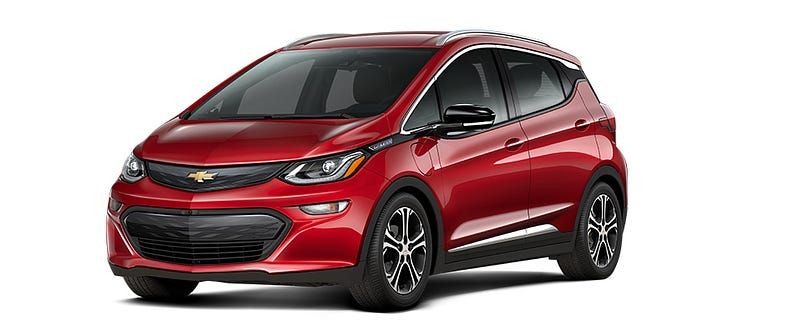
8. The Great EV Cool Down: Consumers Pumping the Brakes on the Electric Dream
Remember all that talk in Section 1 about soaring EV sales and satisfaction? Well, hold onto your lug nuts, because there’s another narrative gaining traction, and it might just validate every gas-guzzling instinct you possess. Turns out, the hype around EVs might be, dare we say, cooling down. According to KPMG’s annual American Perspectives survey, which polled 2,500 adults, there’s an “increasing preference for standard gas-powered vehicles.” That’s right, while the eco-warriors were busy preaching, many consumers were quietly reverting to what they know and love: good old internal combustion.
The numbers don’t lie. When asked their preference between ICE, hybrids, and EVs at the same price, 42% of respondents picked gas-powered cars. That’s up from 38% just last year. Meanwhile, interest in EVs *fell* from 21% to a rather modest 16%. Hybrids, the pragmatic middle ground, held steady at about one-third. It seems that for many, the allure of the silent drive is being overshadowed by the familiar roar of a gas engine.
Lenny LaRocca, US auto sector leader for KPMG, put it bluntly: “I think reality is setting in at this point.” This isn’t just a minor fluctuation; it’s a significant shift in consumer sentiment. People are “feeling more comfortable with gas engine vehicles,” and those persistent concerns about “EV charging infrastructure” and “range” are hitting home. It’s not a full-blown U-turn, but it’s certainly a yellow light for the all-electric bandwagon.
So, while EV advocates point to growth in sales figures—11.4% YoY in Q1, making up 7.5% of the new-vehicle market—analysts like Cox Automotive’s Stephanie Valdez Streaty are warning that “the road ahead will be anything but smooth.” This survey data suggests a quiet but powerful undercurrent of consumer preference that favors the tried-and-true, a sentiment that you, the gas truck owner, probably feel in your bones.

9. Automakers Retreating? When Billions Don’t Guarantee a Green Future
If consumers are feeling a bit of “EV fatigue,” trust us, the automakers are feeling it too, perhaps even more acutely in their balance sheets. While we heard in Section 1 about the ambitious plans and massive investments, the reality of hitting those targets is proving to be a much tougher road than anticipated. The industry is, as The Wall Street Journal reported, “further retreating from its once-ambitious plans to go electric.” This isn’t just whispers in the wind; it’s a strategic pivot, and it directly challenges the narrative of an unstoppable EV takeover.
Take Ford, for example. The Blue Oval, a titan of American automotive might, is reportedly letting Nissan use some of its *unused* EV battery manufacturing capacity in the US. Let that sink in: unused capacity. It’s a clear signal that their projected EV volumes aren’t materializing as quickly as they’d hoped. And it’s not just American giants. Japanese powerhouse Honda recently announced it would slash its planned investments in EVs by a full 30% by 2030, instead opting to focus more on hybrids. These aren’t minor adjustments; these are significant course corrections from companies that have poured billions into electrification.
Lenny LaRocca from KPMG explains the cold, hard financial truth: “You’re actually seeing more people look at impairments around their assets, because [of] EV volumes not reaching the level expected when they were making those investments.” He highlights the staggering “hundreds of billions of dollars in investments” the auto industry has made. The kicker? “Also, the profitability of EVs continues to be a struggle for traditional OEMs.” It’s tough to make money on lower volumes when you’ve made such colossal upfront investments.
So, when LaRocca says, “It’s not surprising that they’d pivot back to where they make money,” he’s speaking directly to the pragmatic reality that even the most innovative industries eventually have to confront. For you, the gas truck owner, this is less about schadenfreude and more about a quiet validation: if the big players are struggling to make EVs profitable, it certainly reinforces the idea that the internal combustion engine still has plenty of life, and economic sense, left in it.

10. The Unpopular Opinion: Why Phasing Out Gas Cars Sparks an Uproar
Beyond the technical merits and financial equations, there’s a deeply emotional and ideological battle brewing around electric vehicles, especially when it comes to the idea of outright banning gas-powered cars. President Biden’s administration has proposed new emissions limits, and some states are even eyeing a full ban on new gas car sales by 2035. But for many, especially those who love their trucks, this isn’t just about policy; it’s about freedom, choice, and a way of life. And the public response? It’s anything but unanimously positive.
The concept of mandating an end to gas-powered vehicles by 2035 faces more public opposition than support. A Pew Research Center survey revealed that about six-in-ten Americans (59%) actively oppose this idea, with only 40% favoring it. What’s even more telling is that support for phasing out gas-powered vehicles has actually *declined* by 7 points since 2021. This isn’t just a fleeting disagreement; it’s a growing sentiment that the government might be overstepping its bounds, particularly when it comes to personal transportation choices.
Digging deeper into the data, the partisan divide is, predictably, stark. While a majority of Democrats (64%) still favor phasing out ICE vehicles, a whopping 84% of Republicans are firmly opposed. But it’s the emotional reaction that really hammers home the point. A “clear majority of Republicans (73%) say they would feel upset about it” if gas car production ended. Democrats are more mixed, with 37% excited, 43% neutral, and 20% still upset. For many, especially those who see their gas truck as an extension of their identity, this isn’t just about emissions; it’s about control, tradition, and personal preference being dictated by policy.
This strong public opposition, particularly among a significant segment of the population, highlights the immense challenge in transitioning away from internal combustion engines. It’s not just about building enough chargers or making batteries cheaper; it’s about winning hearts and minds, and right now, the idea of forced obsolescence for gas cars is proving to be a highly unpopular opinion, one that definitely resonates with the gas truck owner’s defiant spirit.
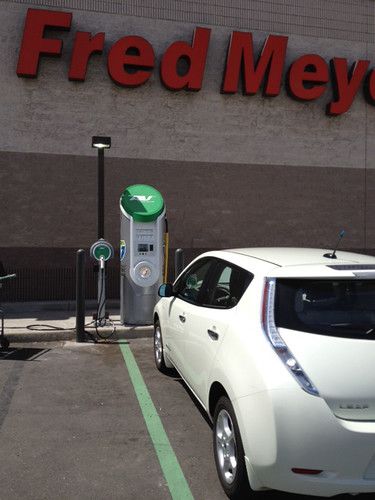
11. Location, Location, (Fuel) Cost: Why EV Savings Aren’t Universal
We talked a big game in Section 1 about the glorious lifetime savings of EVs—$6,000 to $10,000, remember? That’s still true *on average*, but here’s where the “devil’s in the details” proverb hits home. Those grand financial benefits aren’t a guaranteed, universally applicable golden ticket for every single buyer across the country. As a seasoned gas truck owner knows, everything depends on where you are, and that goes double for EV economics. The truth is, “regional factors can affect total EV cost” dramatically.
Maxwell Woody, a research assistant at the University of Michigan, illustrated this perfectly with a comparison between hypothetical EV buyers in Chicago and Houston. He looked at the total lifetime cost over 15 years for a small electric SUV versus a similar gas-powered one. In Chicago, the EV buyer would actually come out ahead by about $3,000. Sounds great, right? But in Houston, the *opposite* was true: the gas vehicle was about $3,000 cheaper over the same period. That’s a swing of $6,000 just by moving a few hundred miles!
So, what gives? It boils down to local economics and policy. Buyers in Chicago, for instance, get an extra $4,000 incentive from the state, making the initial EV purchase less painful. Plus, electricity in Chicago is relatively inexpensive, driving down operating costs. Houston, on the other hand, boasts some of the lowest gas prices in the country. Suddenly, those fuel savings from an EV shrink significantly. Add to that the fact that Texas doesn’t offer additional state tax incentives for EVs, and you’ve got a completely different financial picture.
This nuance is crucial. As experts like Debapriya Chakraborty and Maxwell Woody confirm, EVs generally come out ahead on total ownership costs *if* you include all potential incentives and primarily charge at home. But factors like “regional electricity and gasoline prices,” “the availability of home vs. public charging,” and even the specific “range of the electric vehicle” can completely flip the script. So, while you’re secretly doing the math on your own local gas prices, you know that the EV’s “unseen financial savings” aren’t always what they’re cracked up to be for everyone, everywhere.

12. Tariff Troubles: When Geopolitics Hits the Dealership Lot
Just when you thought the world of car buying couldn’t get more complicated, along comes geopolitics, tariffs, and a whole new layer of uncertainty to muck things up. Forget debates about V8s versus electric motors for a second; we’re talking about external forces that can make or break a car deal, for *any* vehicle. Analysts have already warned that the EV market’s momentum “may not maintain its momentum as the year progresses, thanks to the Trump administration’s tariffs and EV sales incentives on the chopping block in Washington, DC.” This isn’t some abstract economic theory; it’s real-world chaos impacting consumer decisions.
The KPMG survey found that tariffs are having a significant and immediate effect on auto purchase decisions. A substantial 43% of those in the market for a car stated that “they will delay their purchase of a new or used vehicle until they know the impact of new tariffs on vehicle prices.” That’s nearly half of potential buyers putting their wallets away, waiting to see how the political winds shift. On the flip side, another 17% planned to buy *sooner* in an attempt to preempt expected price increases. Talk about a market in flux!
This isn’t just about EV pricing; it’s about the entire automotive landscape being thrown into disarray. We saw consumers “flocked to car dealer lots in March and April,” a phenomenon analysts directly attributed to buyers trying to get ahead of anticipated price hikes from tariffs. As Lenny LaRocca speculated, “I would anticipate that May is probably going to be much lower than March and April.” These external pressures, driven by trade policy, inject a level of unpredictable volatility that makes long-term planning, for both buyers and manufacturers, a nightmare.
So, while the EV crowd is busy touting their environmental benefits, you, the gas truck owner, are quietly observing how easily global politics can disrupt even the most carefully laid plans. Tariffs, shifting consumer preferences, and the ongoing struggle for profitability in new technologies all add up to a market far more complex than simple emissions targets. It’s a messy, fascinating, and sometimes frustrating world, where the future of driving isn’t just about horsepower or kilowatts, but about everything from public charging stations to international trade agreements. And perhaps, deep down, that’s what makes the rumble of your gas engine feel a little more reassuring in these uncertain times.
So there you have it, folks. The secret thoughts of gas truck owners about those sleek, silent electric SUVs aren’t just about stubborn resistance or a love for fossil fuels. They’re rooted in a complex reality that includes significant infrastructure challenges, shifting consumer sentiments, the cold, hard economic struggles of automakers, and even the unpredictable currents of global politics. While EVs offer undeniable advantages, the road to widespread adoption is paved with complexities that even the most fervent electric enthusiast must acknowledge. Maybe, just maybe, those gas truck owners aren’t so behind the times after all; they’re simply seeing the whole picture, grumbling all the way to the pump.



